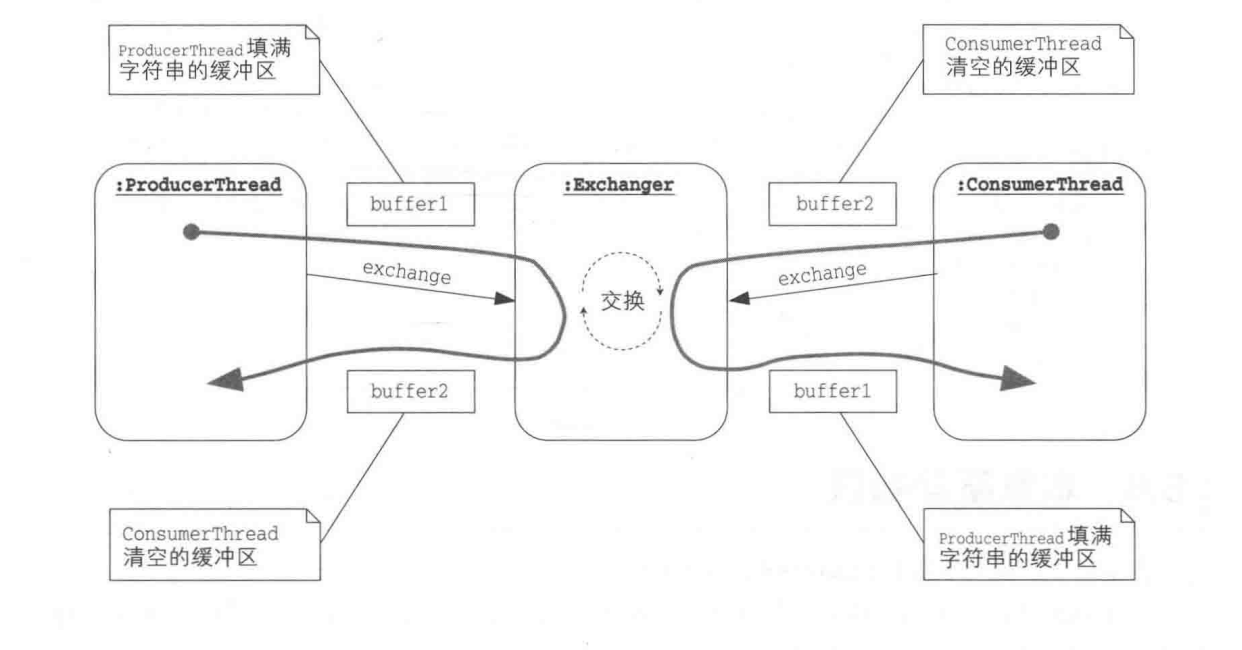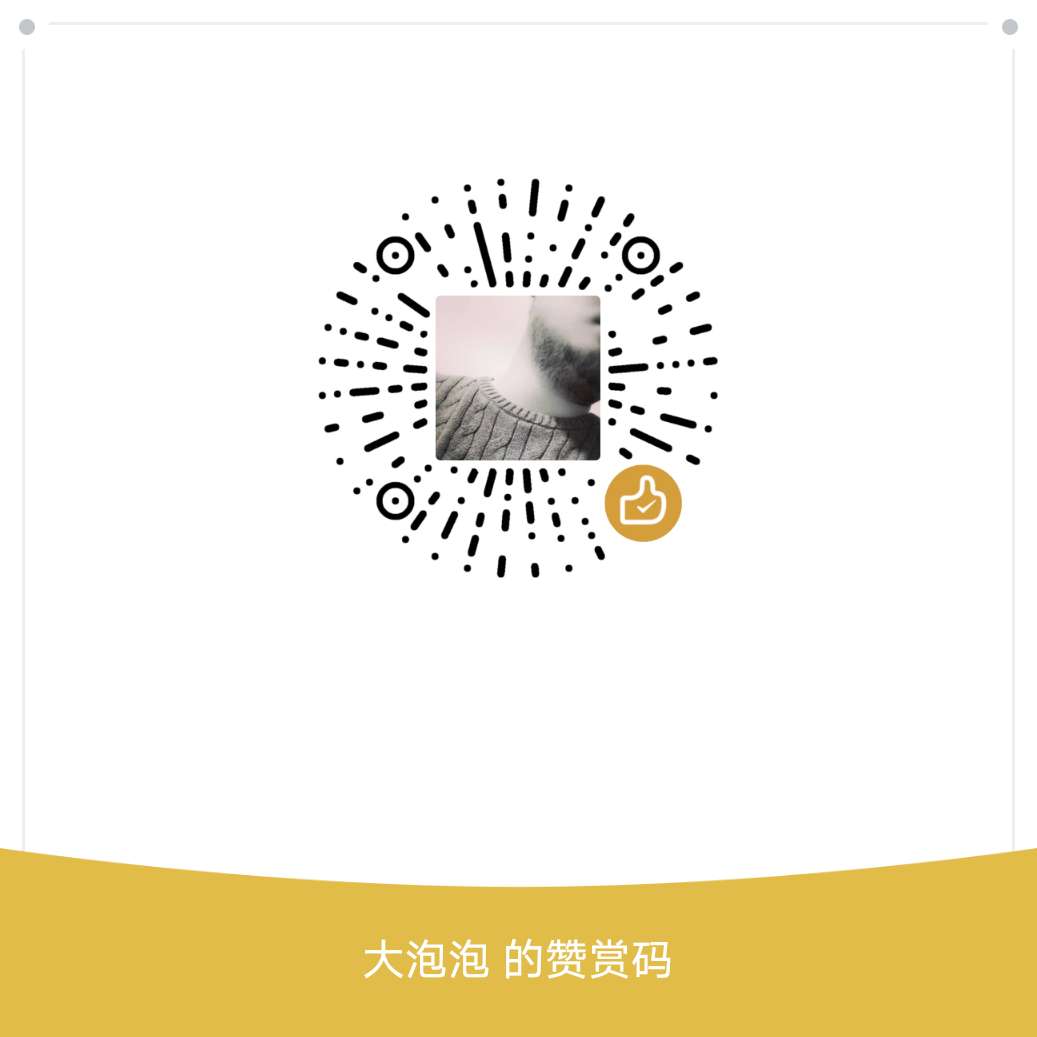生产者消费者模式,即N个线程进行生产,同时N个线程进行消费,两种角色通过内存缓冲区进行通信。
Producer-Consumer模式
生产者消费者模式,即N个线程进行生产,同时N个线程进行消费,两种角色通过内存缓冲区进行通信。
三个角色
在Producer-Consumer模式,承担安全守护责任的是Channel角色。Channel角色执行线程间的互斥处理,确保Producer角色正确地将Data角色传递给Consumer角色。
Channel角色
Producer-Consumer模式为了Producer向Consumer传递Data,在中间设置了Channel角色。
Producer直接调用Consumer的方法:
如Producer直接调用Consumer的方法,那么执行处理的就不是Consumer的线程,而是Producer的线程了。这样执行处理花费的时间就必须由Producer的线程来承担,准备下一个数据的处理也会发生相应的延迟,会使程序的响应性变得差。
就好像:糕点师傅做好蛋糕,直接交给客人,在客人吃完后再做下一个蛋糕一样。
借助Channel角色:
Producer将Data传递给Channel角色后,无需等待Consumer角色对Data进行处理,就可以立即开始准备下一个Data。
也就是,Producer可以持续不断地创建Data,而不会受到Consumer角色的处理进度影响。
如何传递Data
队列:先接收的先传递
使用FIFO先进先出的队列来实现。栈:后接收的先传递
使用LIFO后进先出的栈来实现。优先队列:优先级高的先传递
使用优先队列来实现,Channel角色给收到的Data设置优先级,优先级高的先传递给Consumer来处理。
存在意义
因为Channel的存在,Producer和Consumer这些线程才能保持协调运行。
Channel这个中间角色可以实现线程的协调运行。
- 线程的
协调运行要考虑:放在中间的东西。 - 线程的
互斥处理要考虑:应该保护的东西。
协调运行和互斥处理是内外统一的。
为了让线程协调运行,必须执行互斥处理,以防止共享的内容被破坏;
线程的互斥处理是为了线程的协调运行才执行的。
案例
场景
生产者消费者模式Demo:
旋转小餐厅里,有3位师傅制作蛋糕放到桌子上,然后有3位客人来吃这些蛋糕。
主要业务点:
- 师傅(MakerThread)制作蛋糕(String),并将其放置在桌子(Table)上;
- 桌子上最多可以放置3个蛋糕;
- 如果桌子上已经放满3个,就需等有空余位置时才能继续放置;
- 客人(EaterThread)按蛋糕放置等顺序来取桌子(Table)上等蛋糕来吃;
- 当桌子没有蛋糕时,客人就需等待直到有蛋糕放入;
实现
Main函数:
1
2
3
4
5
6
7
8
9public static void main(String[] args) {
Table table = new Table(3);
for (int i = 0; i < 3; i++) {
MakerThread makerThread = new MakerThread("-> Maker." + i, table, 2020 + i);
makerThread.start();
EaterThread eaterThread = new EaterThread("Eater." + i, table, 2020 + i);
eaterThread.start();
}
}输出:
1
2
3
4
5
6
7
8
9
10
11
12
13
14-> Maker.1 put: Cake No.0 by -> Maker.1
Eater.2 take: Cake No.0 by -> Maker.1
-> Maker.2 put: Cake No.1 by -> Maker.2
Eater.0 take: Cake No.1 by -> Maker.2
-> Maker.0 put: Cake No.2 by -> Maker.0
Eater.2 take: Cake No.2 by -> Maker.0
-> Maker.1 put: Cake No.3 by -> Maker.1
Eater.1 take: Cake No.3 by -> Maker.1
-> Maker.0 put: Cake No.4 by -> Maker.0
Eater.1 take: Cake No.4 by -> Maker.0
-> Maker.2 put: Cake No.5 by -> Maker.2
Eater.0 take: Cake No.5 by -> Maker.2
-> Maker.1 put: Cake No.6 by -> Maker.1
Eater.0 take: Cake No.6 by -> Maker.1Channel角色 Table类:
1
2
3
4
5
6
7
8
9
10
11
12
13
14
15
16
17
18
19
20
21
22
23
24
25
26
27
28
29
30
31
32
33
34
35
36
37
38
39
40
41
42
43
44
45
46
47
48
49
50
51
52
53
54
55
56
57
58
59
60
61
62
63
64
65
66
67
68
69/**
* Channel角色:表示桌子
*
* @author wugang
* date: 2020-07-16 19:59
**/
public class Table {
/**
* 盘子:放置蛋糕的数组
*/
private final String[] dishArray;
/**
* 下一次放置蛋糕的位置
*/
private int tail;
/**
* 下一次取蛋糕的位置
*/
private int head;
/**
* 当前桌子上放置的蛋糕个数
*/
private int count;
public Table(int totalCount) {
this.dishArray = new String[totalCount];
this.head = 0;
this.tail = 0;
this.count = 0;
}
/**
* 放置蛋糕
*
* @param cake 蛋糕
*/
public synchronized void put(String cake) throws InterruptedException {
System.out.println(Thread.currentThread().getName() + " put: " + cake);
// 最多只能放置3个
while (count >= dishArray.length) {
wait();
}
dishArray[tail] = cake;
// 取下一次要放置的位置
tail = (tail + 1) % dishArray.length;
count++;
notifyAll();
}
/**
* 取蛋糕
*
* @return 蛋糕
*/
public synchronized String take() throws InterruptedException {
// 桌子上没有蛋糕,等待
while (count <= 0) {
wait();
}
String cake = dishArray[head];
// 取下一次要取的位置
head = (head + 1) % dishArray.length;
count--;
notifyAll();
System.out.println(Thread.currentThread().getName() + " take: " + cake);
return cake;
}
}基于juc的队列来实现Table:
1
2
3
4
5
6
7
8
9
10
11
12
13
14
15
16
17
18
19
20
21
22
23
24
25/**
* 基于juc的队列来实现Table
*
* @author wugang
* date: 2020-07-17 17:57
**/
public class TableQueue extends ArrayBlockingQueue<String> {
public TableQueue(int capacity) {
super(capacity);
}
public void put(String cake) throws InterruptedException {
System.out.println(Thread.currentThread().getName() + " put: " + cake);
super.put(cake);
}
public String take() throws InterruptedException {
String cake = super.take();
System.out.println(Thread.currentThread().getName() + " take: " + cake);
return cake;
}
}MakerThread生产者:
1
2
3
4
5
6
7
8
9
10
11
12
13
14
15
16
17
18
19
20
21
22
23
24
25
26
27
28
29
30
31
32
33
34
35
36
37
38
39/**
* 表示糕点师
*
* @author wugang
* date: 2020-07-16 20:00
**/
public class MakerThread extends Thread {
private final Random random;
private final Table table;
/**
* 蛋糕的流水号,所有糕点师共用
*/
private static int id = 0;
public MakerThread(String name, Table table, long seed) {
super(name);
this.table = table;
this.random = new Random(seed);
}
public void run() {
while (true) {
try {
TimeUnit.MILLISECONDS.sleep(random.nextInt(1000));
String cake = "Cake No." + nextId() + " by " + getName();
table.put(cake);
} catch (InterruptedException e) {
e.printStackTrace();
}
}
}
private static synchronized int nextId() {
return id++;
}
}EaterThread消费者:
1
2
3
4
5
6
7
8
9
10
11
12
13
14
15
16
17
18
19
20
21
22
23
24
25
26
27
28
29/**
* 表示来吃蛋糕的客人
*
* @author wugang
* date: 2020-07-16 20:00
**/
public class EaterThread extends Thread {
private final Random random;
private final Table table;
public EaterThread(String name, Table table, long seed) {
super(name);
this.table = table;
this.random = new Random(seed);
}
public void run() {
while (true) {
try {
String cake = table.take();
TimeUnit.MILLISECONDS.sleep(random.nextInt(1000));
} catch (InterruptedException e) {
e.printStackTrace();
}
}
}
}
扩展
常用队列
ArrayBlockingQueue类:基于数组的BlockingQueue
表示元素个数有最大限制的BlockingQueue。
当队列满了仍put数据时,或队列为空仍要take数据时,线程会阻塞,LinkedBlockingQueue类:基于链表的BlockingQueue
表示元素个数没有最大限制的BlockingQueue。
该类基于链表,如果没有特别指定,元素个数没有最大限制,只要还有内存,就可以put数据。PriorityBlockingQueue类:带有优先级的BlockingQueue
表示有优先级的BlockingQueue。
数据的优先级时根据Comparable接口的自然排序,或构造函数的Comparator接口决定的顺序指定。DelayQueue类:一定时间之后才可以take的BlockingQueue
表示用于存储java.util.concurrent.Delayed对象的队列。
当从该队列take时,只有在各元素指定的时间到期后才可以take。SynchronousQueue类:直接传递的BlockingQueue
SynchronousQueue类表示的是BlockingQueue,该BlockingQueue用于执行由Producer角色到Consumer角色的直接传递。
如果Producer先put,在Consumer进行take之前,Producer的线程会一直阻塞。相反,如Consumer先take,在Producer执行put之前,Consumer的线程将会一直阻塞。ConcurrentLinkedQueue类:元素个数没有最大限制的线程安全队列
ConcurrentLinkedQueue类并不是BlockingQueue的实现类,它表示元素个数没有最大限制的线程安全队列。
在ConcurrentLinkedQueue中,内部的数据结构是分开的,线程之间互不影响,所以就无需进行互斥处理。
java.util.concurrent.Exchanger类交换缓冲区
java.util.concurrent.Exchanger类用于让两个线程安全地交换对象。
如上案例,可以将buffer1缓冲区传递给ProducerThread,然后将buffer2缓冲区传递给ConsumerThread,同时还会将通用的Exchanger的实例分别传递给ProducerThread和ConsumerThread。

- Main类:
1
2
3
4
5
6
7Exchanger<Object[]> exchanger = new Exchanger<>();
Object[] buffer1 = new Object[3];
Object[] buffer2 = new Object[3];
MakerExchangerThread makerThread = new MakerExchangerThread("-> Maker.", exchanger, buffer1, 2020);
makerThread.start();
EaterExchangerThread eaterThread = new EaterExchangerThread("Eater.", exchanger, buffer2, 2030);
eaterThread.start();
输出
1 | Eater.: Before exchange |
MakerExchangerThread生成者:
1
2
3
4
5
6
7
8
9
10
11
12
13
14
15
16
17
18
19
20
21
22
23
24
25
26
27
28
29
30
31
32
33
34
35
36
37
38
39
40
41
42
43
44
45
46
47
48
49
50
51
52
53/**
* 表示糕点师
* 基于juc包下的Exchanger类: 用于让两个线程安全地交换对象。
* 主要步骤:
* - 生产端填充字符,直到缓冲区被填满;
* - 使用exchange方法将填满的缓冲区传递给消费端;
* - 传递完成后,作为交换,接收消费端已经消费完的空的缓冲区;
*
* @author wugang
* date: 2020-07-16 20:00
**/
public class MakerExchangerThread extends Thread {
private final Exchanger<Object[]> exchanger;
private Object[] dishArray;
private final Random random;
/**
* 蛋糕的流水号,所有糕点师共用
*/
private static int id = 0;
public MakerExchangerThread(String name, Exchanger<Object[]> exchanger, Object[] dishArray, long seed) {
super(name);
this.exchanger = exchanger;
this.dishArray = dishArray;
this.random = new Random(seed);
}
public void run() {
while (true) {
try {
// 向缓冲区填充字符
for (int i = 0; i < dishArray.length; i++) {
dishArray[i] = nextId();
TimeUnit.MILLISECONDS.sleep(random.nextInt(1000));
System.out.println(getName() + " put: " + dishArray[i]);
}
// 交换缓冲区
System.out.println(getName() + ": Before exchange");
dishArray = exchanger.exchange(dishArray);
System.out.println(getName() + ": After exchange");
} catch (InterruptedException e) {
e.printStackTrace();
}
}
}
private static synchronized int nextId() {
return id++;
}
}EaterExchangerThread消费者:
1
2
3
4
5
6
7
8
9
10
11
12
13
14
15
16
17
18
19
20
21
22
23
24
25
26
27
28
29
30
31
32
33
34
35
36
37
38
39
40
41
42
43/**
* 表示来吃蛋糕的客人
* 基于juc包下的Exchanger类: 用于让两个线程安全地交换对象。
* 主要步骤:
* - 使用exchange方法将空的缓冲区传递给生产端;
* - 传递完成后,作为交换,接收生产端已经填满的缓冲区;
* - 使用满的缓冲区的数据;
*
* @author wugang
* date: 2020-07-16 20:00
**/
public class EaterExchangerThread extends Thread {
private final Exchanger<Object[]> exchanger;
private Object[] dishArray;
private final Random random;
public EaterExchangerThread(String name, Exchanger<Object[]> exchanger, Object[] dishArray, long seed) {
super(name);
this.exchanger = exchanger;
this.dishArray = dishArray;
this.random = new Random(seed);
}
public void run() {
while (true) {
try {
// 交换缓冲区
System.out.println(getName() + ": Before exchange");
dishArray = exchanger.exchange(dishArray);
System.out.println(getName() + ": After exchange");
// 从缓冲区中取出蛋糕
for (int i = 0; i < dishArray.length; i++) {
System.out.println(getName() + " take: " + dishArray[i]);
TimeUnit.MILLISECONDS.sleep(random.nextInt(1000));
}
} catch (InterruptedException e) {
e.printStackTrace();
}
}
}
}





